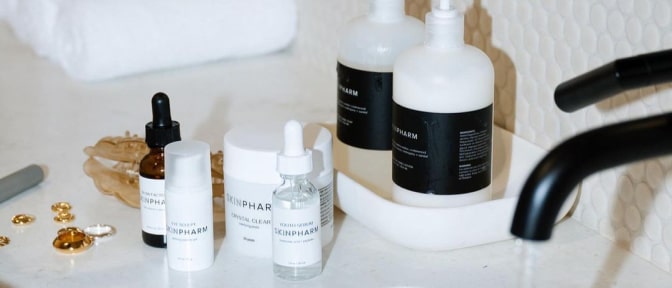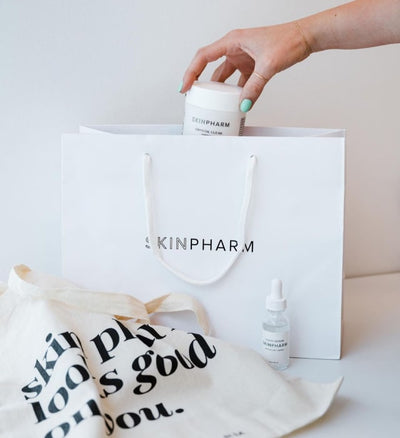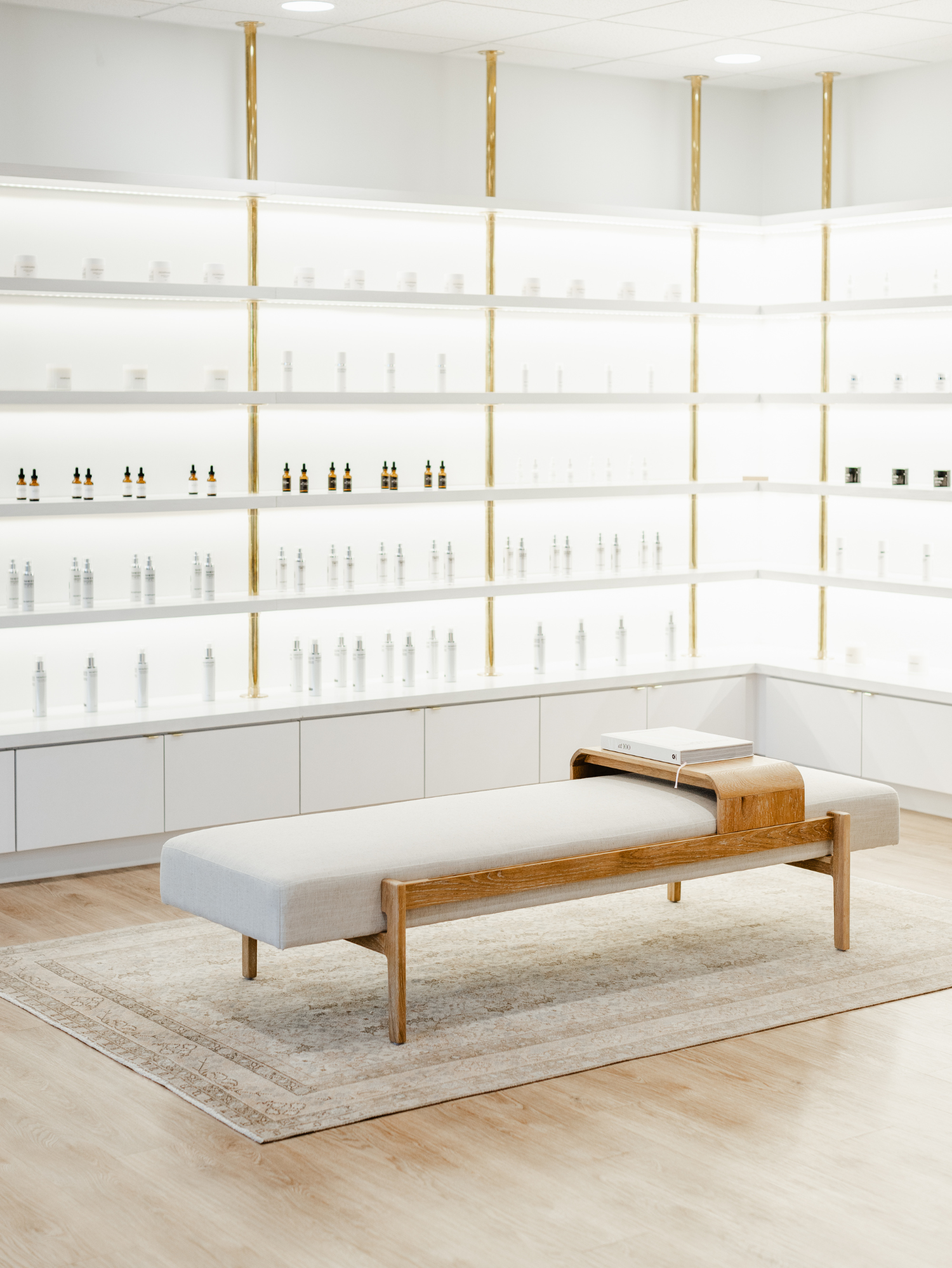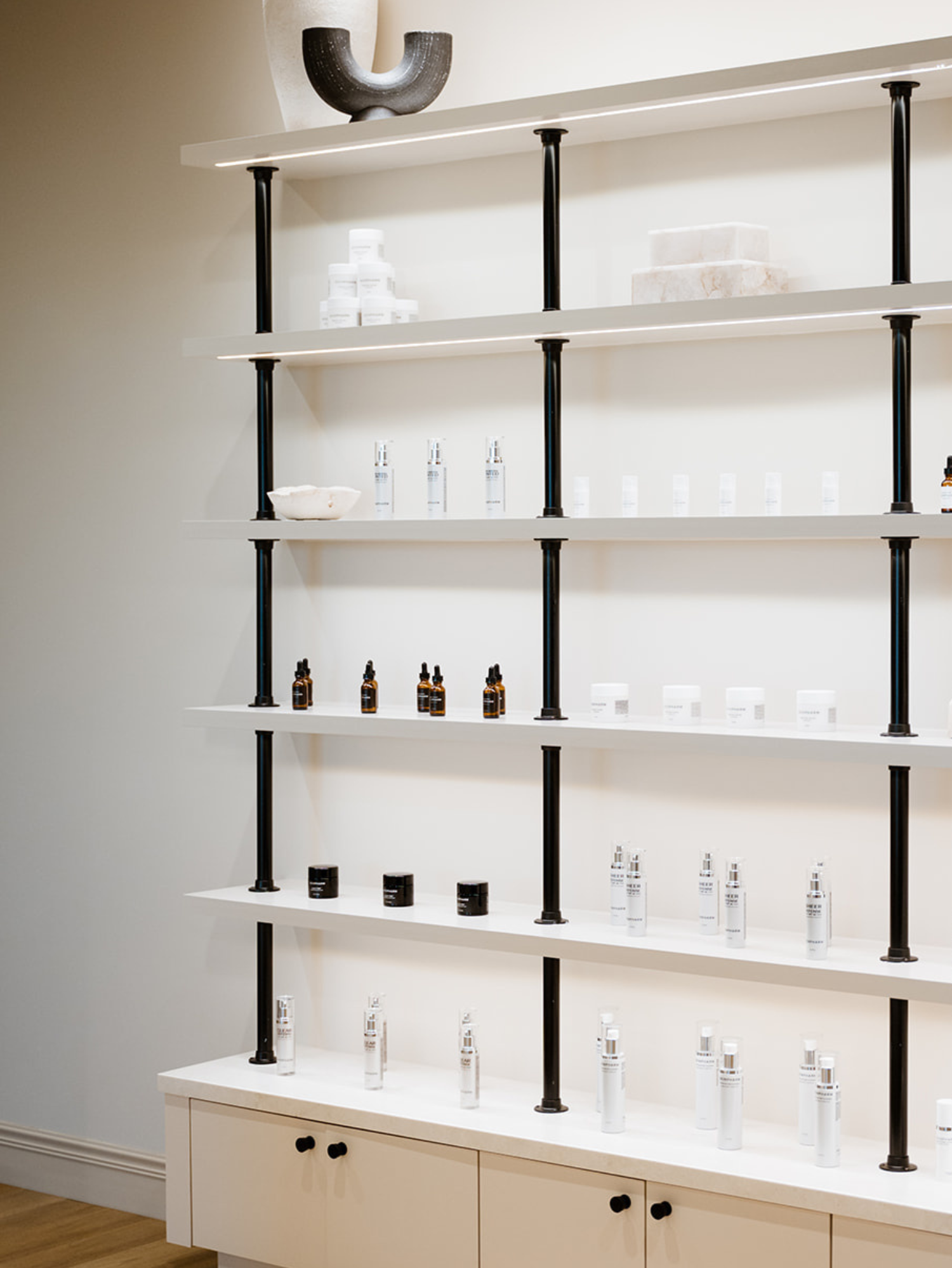Shop skin care
Clinics
VISIT OUR 9 CLINICS →
HOURS
Monday – Friday
9:30a – 5:30p
So, Can You Use Salicylic Acid with Retinol?

Designing a skin care routine involves multiple products, each with its own active ingredients.
Unfortunately, not every ingredient works well with other ingredients.
Knowing which ingredients pair well together and which you should avoid using in the same routine can help you spend your money wisely and keep your skin looking beautiful.
For instance, can you use salicylic acid with retinol? And why would you want to? We have your answers so that you can design your optimal skin care routine.
Salicylic acid basics
Salicylic acid is a beta-hydroxy acid (BHA) that is used to exfoliate the skin. The ingredient comes from the bark of the willow tree, although most salicylic acid is made artificially in a lab.
When you apply it topically, it helps to dissolve the bonds between the dead skin cells on the skin’s surface. With weaker bonds, it’s far easier to remove them from the face and decrease the risk of them building up.
This exfoliative action is a significant benefit because most breakouts originate from pores that become clogged with dead skin cells and other debris, trapping bacteria inside. With fewer dead skin cells sitting on the skin’s surface, your complexion will not only look brighter and more radiant but will also be more clear and even.
Salicylic acid is also oil-soluble.
Solubility refers to how easily a product can be dissolved into another product. In this case, since salicylic acid is soluble in oil, that means that it is most easily dissolved in it. This ability makes the ingredient so great at what it does, as oil (sebum) is one of the most common components of the skin’s surface.
When salicylic acid can travel deeper into the pores, traveling with the skin’s natural oil, it can exfoliate from the inside out.
What is salicylic acid used for?
Salicylic acid boasts several benefits, especially for those prone to breakouts. These benefits may include:
- Clearing up the skin and preventing future breakouts
- Reducing the number of blackheads and whiteheads
- Exfoliating the skin
- Smoothing the complexion
- Opening clogged pores
- Reducing excess oil
Salicylic acid products are mostly available over the counter.
Retinol basics
Retinol is one of the holy grail products, especially for people concerned with visible aging. However, while most people recognize the ingredient’s name, they don’t know what it is and where it comes from.
Retinol is a form of vitamin A, an essential vitamin needed by the body for various processes. However, the ingredient has other cosmetic benefits when applied topically.
The most significant benefit of retinol is its ability to increase how quickly the skin turns over its skin cells. Under normal conditions (although this varies according to your age), the body naturally creates and cycles through new skin cells roughly every 30 days or so.
When you speed up this process, you see those new, young skin cells instead of older, dead ones. What that means for your appearance is that you have the ability to smooth out your complexion, decrease the appearance of fine lines, wrinkles, and dark spots (hyperpigmentation), and improve your skin’s overall texture.
What is retinol used for?
Like salicylic acid, retinol offers its own set of targeted benefits for the skin.
- Reduces the appearance of fine lines and wrinkles
- Clear pores and minimize their appearance
- Brighten the complexion
- Smooth the complexion
- Even out the skin tone
While some retinol products are available over the counter, other, more potent forms of the ingredient require a prescription and a visit to a dermatologist.
So can you use salicylic acid with retinol?
Most skin doesn’t just stick with a single concern; it often has multiple. Unfortunately, that means needing to combine ingredients, which can be tricky if you’re unsure which pair together effectively.
If you are dealing with both the visible signs of aging and adult breakouts, pairing salicylic acid and retinol may be tempting. After all, each ingredient is highly revered in the dermatologic community for being excellent at treating its specific concern. But can you use salicylic acid with retinol?
The answer is yes, as long as you are aware of their potential for dryness.
Each ingredient on its own has a risk of overly drying or dehydrating the skin, so combining them effectively doubles that risk. However, that shouldn’t stop you from taking advantage of their benefits.
To help reduce the risk of dehydrated skin, separate the use of salicylic acid and retinol in your skin care routine. The best way to do this is to use your salicylic acid product in the morning and your retinol product at night.
It’s also crucial to include a quality moisturizer in your routine. As your skin reacts to both ingredients, it’s possible that you may experience some damage to your moisture barrier (the skin barrier). Keeping your skin hydrated as best you can by using moisturizer and drinking plenty of water can stop issues before they begin.
What else should you know about using salicylic acid and retinol together?
In addition to monitoring for excessive skin dryness, you should incorporate one additional skin care product into your routine when you use salicylic acid and retinol together.
While everyone should use sunscreen before leaving the house, no matter what skin care products they use, this is non-negotiable when retinol is part of your routine. Specifically, retinol’s ability to speed up the turnover of skin cells also makes the skin more susceptible to damage from the sun. That means you must include sunscreen as part of your daily skin care routine.
Keep in mind that not all sunscreens are created equal.
When choosing sunscreen, there are a few factors to look for specifically. According to dermatologists, a quality sunscreen should include broad-spectrum protection (against UVA and UVB rays), a sun-protective factor (SPF) of 30 or above, and water resistance.
Anything other than that may not be sufficient to protect you from the adverse effects of the sun, both short-term and long-term.
Skin irritation is another potential side effect to look out for when combining salicylic acid and retinol. Because both products are incredibly effective, the skin may have difficulty adjusting at first. You can counteract the risk of irritation by introducing the products slowly and one at a time. Try using salicylic acid no more than one to two times per week.
Once your skin has adjusted, do the same with retinol. If your skin becomes irritated at any point, cut back or stop entirely and allow it time to recover.
Investing in quality ingredients
Skin care is often about trial and error and trying products until you find the ones that work best for you. If you try to ease into using salicylic acid and retinol but find they are too harsh for your skin, other options are available.
You can always try using salicylic acid alone and then adding retinol down the line after your skin has cleared up.
High Beam brightening lotion is one of our favorite ways to help brighten up the skin tone. Instead of relying on retinol to brighten the complexion, our lotion uses natural botanical extracts, anti-aging peptides and arbutin.
If you struggle with breakouts, our Crystal Clear clarifying pads offer a way to use the power of salicylic acid combined with other hydroxy acids like glycolic acids and lactic acid. All you need to do is just rub the pad over freshly cleansed skin a few times a week and watch your skin begin to clear up.
And finally, if you’re looking for products to add to your self-care routine, try out our Clay Time charcoal mask. The mask offers a small percentage of salicylic acid to clear the skin while absorbing excess oil with charcoal. Just massage the mask into your skin for about three minutes, enjoy the lavender scent and rinse with warm water.
You can use it between two to three times a week for relaxation and clearer, more radiant skin.
Consider a skin consultation
If you’re ready to explore all the available options to brighten your skin, consider scheduling a consultation with one of our skilled skin care providers.
During this appointment, you will have one-on-one time with a provider to discuss your goals, receive a skin assessment, and develop a game plan customized to your unique skin. You can even walk out the door with a bag of customized skin care products to get you started!
To sum things up...
So, can you use salicylic acid with retinol? Absolutely yes, as long as you take steps to keep your skin hydrated and avoid irritation. Both ingredients are incredibly effective at what they do, so combining them can help clear up your skin and make it appear more youthful, radiant and smooth.
If you’re still unsure where to start, schedule a consultation with a Skin Pharm provider to discuss the options available to help you reach your goal. You deserve this!
SOURCES:
Salicylic acid | HOC6H4COOH | PubChem (nih.gov)

















